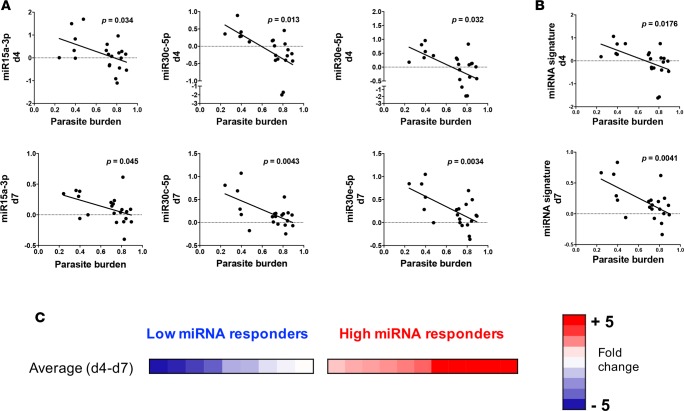Figure 2. Expression of miR15a-3p, miR30c-5p, and miR30e-5p during P. falciparum blood-stage infection inversely correlates with parasite burden.
Whole blood was collected prior to, and on days 4 and 7 of infection into PAXgene blood RNA tubes. Relative quantification of miR15a-3p, miR30c-5p, and miR30e-5p at day 4 (d4) and day 7 (d7) of infection (compared with day 0) was determined by RT-qPCR using Taqman microRNA assays and the ddCt method. Total parasite burden during the first 7 days of infection was defined as the AUC of the log-transformed parasite levels measured using a consensus P. falciparum qPCR assay from day 0 to day 7 of infection. Correlation between parasite burden and the relative average expression of miR15a-3p, miR30c-5p, and miR30e5p (A) at day 4 or day 7 of infection or (B) the average of fold changes for miR15a-3p, miR30c-5p, and miR30e-5p (miR signature). Parasite burden and miR expression datasets were log transformed for graphic representation and linear regression analysis. (C) Volunteers were classified as low-miR responders (n = 9 volunteers, average fold change ≤ 1) or high-miR responders (n = 11 volunteers, average fold change ≥ 1.5) according to the combined relative expression of miR15a-3p, miR30c-5p, and miR30e-5p at day 4 and day 7 of infection. One volunteer whose overall fold change was between 1 and 1.5 was not classified as a high- or low-miR responder, and was therefore excluded. Graphs show data from 21 volunteers (each depicted as a colored square across the x axis) from 4 independent cohorts.

